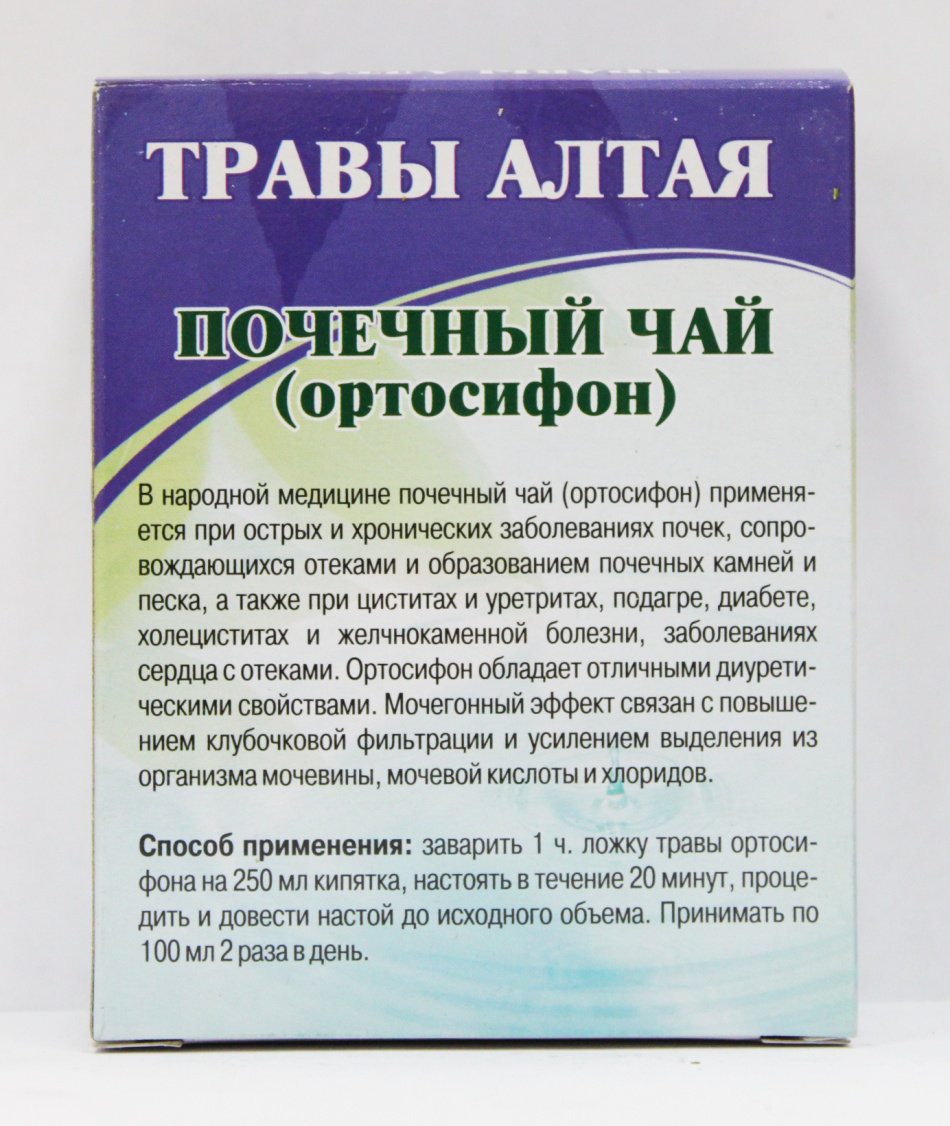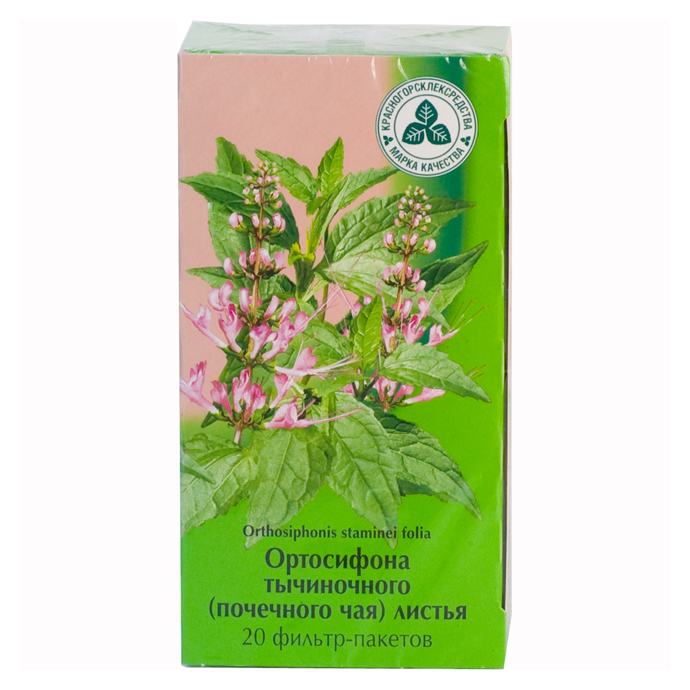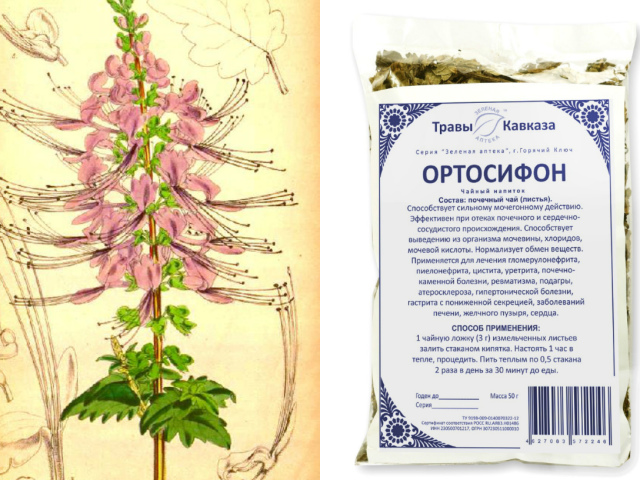Why is the plant ORTOSIPHIPHIENT? What does he heal? How to use it?
Content
- Stainer orthosiphon: contraindications and therapeutic properties
- Video: Stain Orthosiphon (renal tea)
- Renal fee, staminal orthosiphon - indications for use
- Renal tea orthosiphon: instructions for use
- Stainflower orthosiphon during pregnancy: Application
- Orthosiphon in lactation: application
- How to use orthosiphon to children?
- How to use orthosiphon for cystitis?
- How to use orthosiphon from edema?
- How to use an orthosiphon of stamen renal tea for weight loss?
- ORTOSIPHON TETOCHING ARCHECHIOUS Tea: Reviews
- Video: renal tea beneficial properties
The stamen orthosiphon is an evergreen plant of the labocell family, growing in natural conditions in the tropical regions of the planet, in particular, in the forests of Sumatra, Java, Indonesia and in some other areas. In Europe, the stamber orthosiphon is cultivated on the Black Sea coast.
Shrubs of an orthosiphon of stamens can reach a meter in height.
The tetrahedral and strongly branching stems of the plant of a greenish-violet shade. Supply, oblong, with short petioles, the leaves of the plant have cloves on the edges. The flowers of the orthosiphone are medium-sized, pale purple, growing with cystic inflorescences. They bloom in the summer, but in conditions of seed cultivation they practically do not give.
Stainer orthosiphon: contraindications and therapeutic properties

Like many plants, stammer orthosiphon is used as a drug. His positive properties are known, first of all:
- as an renal fee
- with cystitis
- as a remedy for edema
- for lactation
- as a means for weight loss
IMPORTANT: The stammer orthosiphon has pronounced diuretic properties, while potassium is not washed out, but on the contrary, it is replenished
The leaves and apical shoots of the plant have the healing properties. They are collected and dried as a source:
- potassium salts
- organic acids (rosemary and citric)
- tannins
- triterpena saponins
- glycoside of orthosiphonin
Ortosiphonin dissolves both in water and in alcohol. Dried leaves of the plant acquire a brownish-green color. They have no smell, but they tasted bitter-pushing.

Stainflower orthosiphon is recommended for:
- swelling of different nature, including caused by diseases of the kidneys
- gout
- arterial hypertension
- the dilapidated diathesis
- liver diseases
- gastritis with reduced acidity
- cholecystitis
- urolithiasis
- and some other diseases
Orthosiphone as a homeopathic remedy has practically no contraindications. Doctors sometimes recommend the infusion and decoction of it even during pregnancy and breastfeeding. At the same time, with caution, this tool should be taken by those who have kidney stones so as not to cause their movement and so that the ureter blocking, as well as people with heart failure, does not occur as a result.
Nevertheless, as in any other cases, you should not engage in self -medication, and take any therapeutic agent that does not even have actual contraindications only on the recommendation of the doctor.
VIDEO: Staineric orthosiphon (renal tea)
Renal fee, staminal orthosiphon - indications for use
Physiologically renal tea from an orthosiphon of stamens is capable of:
- aquil urine
- improving the function of renal tubules
- urea from the body
- therefore, improve the work of the kidneys, relieve swelling and have an antispastic effect

How to prepare an infusion:
- 0.5 teaspoons of dried grass pour 200 ml of boiling water, put on fire and bring to a boil. After that, insist 20 - 25 minutes
- Strain the resulting infusion and add to the initial volume
- Take 0.5 cups in 20 - 25 minutes. Before eating twice a day
- Course of treatment: 1 - 1.5 months
How to cook a decoction:
- 2 tbsp. tablespoons of dried leaves pour 200 ml of boiling water
- For a quarter of an hour, keep a decoction in a water bath. Insist 45 minutes
- Strain the resulting broth and add to the original volume
- Take 0.5 cups twice a day 25 minutes before meals
Renal tea orthosiphon: instructions for use

The renal tea from an orthosiphon is considered a drug of plant origin, so it has an official instruction in which it is indicated:
- indications for treatment with this tea
- contraindications to him
- method of application (in the form of herbal collection and in filter packages)
- side effects
- interaction with other drugs
- shelf life
Important: Before you drink the renal fee from an orthosiphon of the stamen, you must familiarize yourself with the instructions
Stainflower orthosiphon during pregnancy: Application

The infusion of stammeric orthosiphon is one of the few tools that can help pregnant women with kidney and edema problems during this period, or having inflammation of the genitourinary system.
However, you can accept this tool with pregnant women only if it was attributed to the doctor, and no more than 3 weeks in a row.
Orthosiphon in lactation: application
The use of stammeric orthosiphon in lactation after prescribing a doctor will help improve the general condition of the woman, get rid of edema and treat the problems of the genitourinary sphere.
The only precaution that women who breastfeed (or pregnant women) should know about is that in the so -called renal tea only an orthosiphone should contain without adding other ingredients to it. This precaution is not superfluous, since the orthosiphone is included as the component of several renal teas and fees.
How to use orthosiphon to children?
Orthosiphone is prescribed for children only after they reach 12 years old according to health.
How to use orthosiphon for cystitis?

With cystitis, tea from an orthosiphone will help get rid of unpleasant pain, relieve inflammation and facilitate the passage of urine.
After a week of its use, cystitis can be cured.
- You need to take the product by brewing a teaspoon of dried grass in a glass of boiling
- Next, it should be insisted for half an hour, strain and add boiling water to the infusion to make up for volume
- Take before meals in 30 minutes in a warm form
- Brew the infusion daily
Infusion or tea from orthosiphon can also be taken once to relieve spasmodic pain, since this plant in the infusion and decoctions can relax smooth muscles and relieve spasms.
How to use orthosiphon from edema?
Edema occurs in the body due to improper functioning of the kidneys, bladder, fluid accumulation in the body.

Being an excellent diuretic tool, the orthosiphone allows you to get rid of edema in a fairly short time, however, to consolidate the result, it should be taken for three weeks.
It should be taken according to the recipes indicated above, that is, before meals, 100ml, after brewing an infusion or making a decoction.
You can also purchase an orthosiphon in the form of filtered bags. The method of brewing them will be indicated on the packaging.
How to use an orthosiphon of stamen renal tea for weight loss?
The stamenic orthosiphon can also be taken as a means of weight loss, since it will help to remove excess fluid from the body, and without harm to it, as in the case of medication diaurerates.

To do this, brew a bag of finished tea or dry grass in a thermos for a day and drink it before meals for 25-30 minutes. Such brewed tea can be stored for no more than one day. They drink it warm, it tastes quite well.
ORTOSIPHON TETOCHING ARCHECHIOUS Tea: Reviews
Positive reviews of tea from Ortosiphon relate to its diuretic and relieve inflammation and pain of qualities, which is especially relevant for diseases of the kidneys and cystitis.
Sometimes in the reviews the question arises of the appropriateness of this tool during pregnancy and during lactation, despite the confidence of doctors in its harmfulness. In any case, only a doctor for each individual patient can evaluate the degree of benefit and harm to any means of human health.







